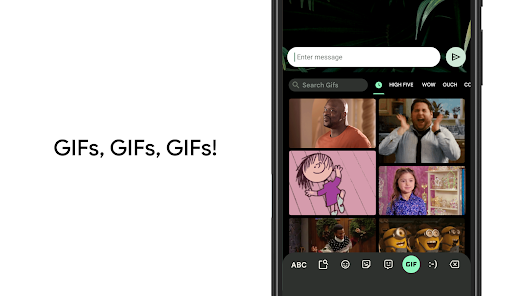Li Wei was faced with a decision in the busy streets of Beijing. She was having trouble using her laptop’s input mechanism and desperately needed to send an email to her overseas business partner. Many people who deal with the intricate world of Chinese characters and digital communication can relate all too well to this situation. The phrase “zaixianshuru” refers to online input methods. This article examines the term’s development, relevance, and influence in the current digital environment.
Is Zaixianshuru what?
Zaixianshuru is a term used to describe a variety of online text entry techniques, with an emphasis on non-Latin script languages such as Chinese. These techniques let users use virtual input tools or regular keyboards to input complicated characters quickly and effectively.
Evolution and History
Online input methods started to emerge in the late 20th century, coinciding with the emergence of personal computers. Users used actual dictionaries and manual conversion at first. But technological developments resulted in the development of software programmes that could translate phonetic input into complicated characters.
Important Marks
- 1980s: The release of the first pinyin input techniques.
- 1990s: More advanced software with text prediction capabilities was developed.
- 2000s: Computers and smartphones began to incorporate zaixianshuru tools.
- 2010s: Using AI and machine learning to improve speed and accuracy.
Different Online Input Method Types
Zaixianshuru techniques come in a variety of forms, each meeting distinct requirements and tastes.
Pinyin input
The most popular way for entering Chinese characters is Pinyin input. When a user inputs a character’s phonetic spelling, the programme provides potential characters that fit the input.
input for stroke
Users using stroke input must enter the strokes in the proper order to make a character. Users who are acquainted with the conventional stroke order of Chinese characters will find this method useful.
Recognition of Handwriting
Users can use a stylus or a touch screen to draw characters thanks to handwriting recognition technology. These illustrations are then transformed into digital text by the programme.
Voice Identification
With the aid of speech recognition technology, users can speak while entering text. Thanks to developments in voice recognition and natural language processing, this approach is becoming more and more common.
Technology Underpinning Zaixianshuru
Zaixianshuru uses a variety of technologies to deliver precise and effective input techniques.
Processing of Natural Language (NLP)
Understanding and forecasting user input requires NLP. It assists in reading handwritten or spoken material and translating phonetic input into the appropriate letters.
Artificial Intelligence and Machine Learning
Through the use of AI and machine learning, zaixianshuru tools become more accurate over time as they pick up on user preferences and behaviour. Autocorrect and predictive text functions are made possible by these technologies.
Design of User Interface
For zaixianshuru tools to be effective, their interface must be easy to use. Users can enter text more quickly and effectively with intuitive design, which lowers the learning curve for inexperienced users.
Technologies Behind Zaixianshuru
| Technology | Role in Zaixianshuru |
|---|---|
| Natural Language Processing (NLP) | Understanding and predicting user input |
| Machine Learning and AI | Enhancing accuracy and providing predictive text |
| User Interface Design | Ensuring ease of use and efficiency |
Zaixianshuru’s Effect on Communication
Zaixianshuru has had a major influence on communication, particularly in areas where non-Latin scripts are used.
Quickness and Effectiveness
Typing complicated characters has become much faster and more efficient thanks to online input techniques. This development has proven crucial in academic and professional contexts where prompt communication is necessary.
Accessibility
Zaixianshuru has improved accessibility to digital communication for individuals of all ages and educational levels. With the help of digital tools, people who are not proficient in traditional writing can now communicate successfully.
Worldwide Networking
Additionally, by providing worldwide connectivity, these input modalities have made it possible for users to converse across linguistic borders. For example, pinyin input facilitates cross-cultural communication by enabling non-native speakers to type Chinese characters.
Impact of Zaixianshuru on Communication
| Impact | Description |
|---|---|
| Efficiency and Speed | Improved speed and efficiency of typing complex characters |
| Accessibility | Made digital communication accessible to a broader audience |
| Global Connectivity | Facilitated communication across language barriers |
Obstacles and Restrictions
Zaixianshuru has numerous benefits, but it also has drawbacks and restrictions.
Problems with Accuracy
Even while technologies like artificial intelligence (AI) and machine learning have increased accuracy, errors can still occur when an input method interprets user input incorrectly.
Learning Curve
There is a severe learning curve for certain input modalities, particularly stroke input and handwriting recognition. To apply these techniques properly, users need to know the proper character structure and stroke order.
Reliance on technology
Zaixianshuru’s technological prowess is paramount to its effectiveness. Communication might be hampered by any technological problems, including device failures or software faults.
Challenges and Limitations of Zaixianshuru
| Challenge | Description |
|---|---|
| Accuracy Issues | Potential for misinterpretation of user input |
| Learning Curve | Steep learning curve for some input methods |
| Dependence on Technology | Reliance on technology for effective functioning |
Upcoming Patterns in Zaixianshuru
Zaixianshuru has a bright future ahead of them, since new developments in technology will only serve to improve these resources.
Combining AI with Big Data
Deeper integration with AI and big data is probably in store for future zaixianshuru solutions. Accuracy and user experience will enhanced by these technologies, which will make more contextualised and personalised input techniques possible.
Improved Multimodal Input
Improved multimodal input techniques will also be available in the future, fusing voice recognition, handwriting, stroke, and pinyin into a seamless user interface. Various user preferences and scenarios will be supported by this connection.

Multi-Platform Interoperability
Zaixianshuru technologies should provide improved cross-platform compatibility as digital ecosystems get more integrated. This will enable users to migrate between devices without losing data or functionality.
Future Trends in Zaixianshuru
| Trend | Description |
|---|---|
| Integration with AI and Big Data | More personalized and context-aware input methods |
| Enhanced Multimodal Input | Combining various input methods for a seamless experience |
| Cross-Platform Compatibility | Improved functionality and data continuity across devices |
FAQs Regarding Zaixianshuru
Is Zaixianshuru what?
Online input techniques for typing complex text and characters, especially in non-Latin script languages like Chinese, referred to as “zaixianshuru.”
How Does Input for Pinyin Occur?
Entering a character’s phonetic spelling required for Pinyin input. After that, the software makes character suggestions that might fit the input.
What Kinds of Zaixianshuru Are There?
Pinyin input, stroke input, handwriting recognition, and speech recognition are the four primary zaixianshuru types.
What Changes Have You Seen in Zaixianshuru Over Time?
From simple pinyin input techniques in the 1980s to sophisticated tools incorporating AI and machine learning in the 2010s, Zaixianshuru has developed over time.
What Advantages Does Using Zaixianshuru Offer?
The advantages include faster and more efficient typing, easier access to digital communication, and better worldwide connectivity.
What Are Zaixianshuru’s Common Difficulties?
Accuracy problems, a high learning curve for some techniques, and reliance on technology for efficient operation are typical obstacles.
Conclusion
The way individuals input and communicate text has completely transformed by Zaixianshuru, particularly for non-Latin script languages like Chinese. Advances in AI, machine learning, and user interface design have propelled zaixianshuru from its primitive origins to its present-day advanced condition. The future is bright, even with its challenges: trends indicate that input methods will become more individualised, multimodal, and cross-platform compatible. In our increasingly interconnected society, knowing and using these tools well can improve digital communication significantly.

